Hot Science Experiments Posts


News: Danes One Step Closer to DIY Suborbital Spaceflight
They've been at it for a few years now, but the crazy group of amateur rocket scientists who call themselves Copenhagen Suborbitals have triumphed over adversity, successfully launching their DIY rocket nearly 2 miles into the sky last Friday. The privately funded, non-profit aims to one day send human beings into suborbital space on the cheap, without the need of government budgets and administration.

Neuro-Fashion: Wiggling Cat Ears with Brainwaves
While most people go to great lengths to conceal their emotions, Japanese company Neurowear is offering a product that would reveal states of tension, excitement and relaxation—all by the up-and-down motion of a pair of cartoony cat ears. Necomimi is a "new communication tool that augments human’s body and ability." The device reads your brain waves and communicates your emotions before you even open your mouth:

Printable Tactile Astronomy: How to "See" Outer Space if You're Blind
Have you ever felt the desire to reach out and touch a galaxy? Or "feel" those stunning nebulas and planets you see in Hubble photos? As alluring as it sounds, it's safe to say the odds of your whim coming true are nonexistent. You'd have to travel about 6 earth years and spend millions of dollars building your own personal spacecraft to get close enough to actually wave your hand through one of Saturn's rings. But in an attempt to help the blind "see" what they're missing, some semblance of ...

Breathtaking Undersea Aliens: Interview with Deep Sea Photographer Alexander Semenov
In recent years, Russian marine biologist Alexander Semenov has built a stunningly beautiful collection of deep sea photography, capturing alien creatures only locatable in the hostile, icy depths of the far northern sea off the coast of Russia.

How To: Make flowers glow in the dark with a fluorescent highlighter
Are you looking for some fun party decorations, or a neat gift idea? You can make beautiful glow in the dark flowers, using nothing more than a standard fluorescent highlighter and ultra violet light. After you watch this video, you will be able to amaze your friends by making flowers glow in the dark!

News: Scientists Grow World's First DIY Eyeball
DIY is a far-reaching term—though culturally it tends to refer to hacks, mods, crafts and constructions, its meaning can also extend to the ongoing trials and tribulations of the evolution of mankind: astonishing developments in technology, desperate acts of self-preservation or as in today's topic, discoveries in science that truly move the needle.

DIY Anthropology: International Obscura Day this Saturday. Go Wild.
Calling all curious minds—scientists, anthropologists, relentless tourists: Saturday, April 9th, is International Obscura Day, the day to "explore hidden treasures in your hometown," or so says Atlas Obscura, a website dedicated to public curiosities and esoterica. If you're the kind of person who appreciates public oddities every day of the year, tomorrow is icing on the cake. Celebrate Obscura Day in one of hundreds of locales—from Los Angeles to Sydney, from Berlin to Manila.

News: Do Real Science. No Degree Required.
What's the next best thing to being an official scientist? Being a non-official one. A new website called Science for Citizens helps you find the science experiment of your dreams, hook up with the scientists involved, and actually take part in the experiment itself. Here are some examples of what you can do:

News: Legion of Creepy Geminoids Hang Out Face-to-Face with Their Human Dopplegangers
What would it be like to have a super-realistic humanoid modeled after you...and then come face-to-face with the moving, life-like version of yourself... Creepy? To say the least.

News: Thirsty Plants Text for Water
Can't remember when to water the plants? Wish they could just tell you when they need watering—just call you on the phone or something? Or maybe text you, "Help I'm desiccating!" Telecommunications researcher Kate Harman has come up with the device of an absent-minded plant owner's dreams—Botanicalls. It hooks up to your plant and sends you a short text message when the plant is too dry. Each kit costs $99 and includes metal sensors connected to a microcontroller. Insert the sensors into the ...

News: Creepy Facial Reconstruction of Iceman Mummy
It's tough to figure out what a mummy would have looked like when he was alive; soft tissue of a human body decays, even in ice. But, Dutch brothers Adrie and Alfons Kennis took the challenge. Using techniques that belong to both science and art, they managed to reconstruct the face and body of Otzi the Iceman, a mummy who was found in the Italian Alps in 1991.

How To: Play Music With Your Mind
Tired of getting calluses from incessantly strumming along to 'No Woman No Cry'? Just hook up to the brain-music system and use your brain power to play a tune instead. I'm not talking—humming along in your head. The machine, created by composer and computer-music specialist Eduardo Miranda of the University of Plymouth, UK, is composed of electrodes taped directly onto your skull that pick up tiny electrical impulses from neurons in your brain and translates them into musical rhythms on a co...

How To: Get Rid of All that Space Junk
How about a laser? One that is strong enough to nudge debris out of earth orbit. That's what NASA contractor James Mason wants to do, and his lab simulations suggest that the idea is possible. Mason wants to use a 5kW ground-based laser and a ground-based 1.5 meter telescope to spot potentially hazardous space waste and shove it off, by about 200 meters per day of lasering. It's kind-of like air traffic control for near earth orbit.

News: Bullet-Proof Silk Sheets
Enjoy rolling around at night in the sleek luster of silk? Also afraid of a mobster finding out you're rolling around with his cousin's wife? Solution: bullet-proof silk sheets. All you need is the strongest biomaterial ever found--Darwin's bark spider silk. So, grab a loom and start weaving.

News: Don't Miss Tonight's Super Perigee Full Moon!
Some of you have already seen the superbness of tonight's "super moon", but for those of you in the western half of the United States, there's still time to ready your cameras and enjoy March 19th's super full moon. It's the biggest full moon in almost 20 years, the last one appearing in March of 1993.

How To: How Much Would It Cost to Discover Every Animal on Earth?
Are you prone to crusades of the overambitious? Well, here's one for you: try to find and identify every animal on earth. You may think scientists have a handle on this, having pinned down 1.4 million animal species so far, but there are millions more are out there, waiting to be found. Brazilian scientists have put the cost of finding the rest at a decisive $263 billion.
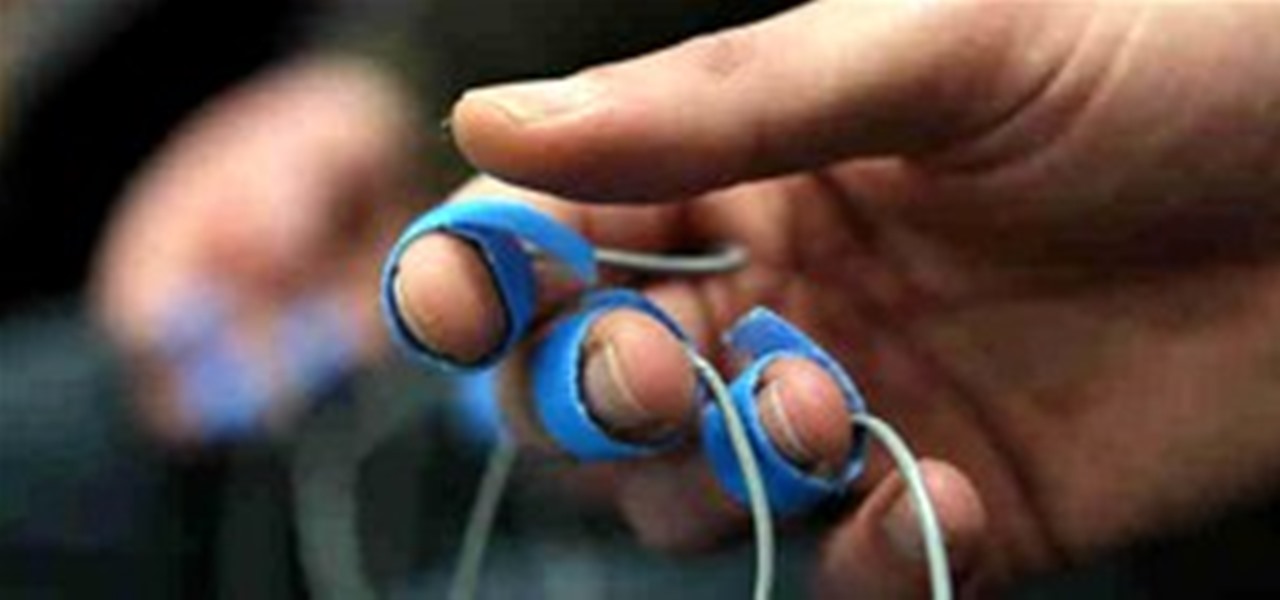
How To: Control a Movie Plot with Your Emotions
Not in the mood for a sappy ending? Well, strap in because "Emotional Response Cinema Technology" lets your own body physiology control the movie music, the special effects, and even the movie ending. A collaboration between BioControl Systems, Filmtrip, and the Sonic Arts Research Center at Queen's University Belfast, the technology was recently showcased at the SXSW film festival in Austin, TX, where the newly minted horror film Unsound interacted with the audience through wires connected t...

How To: Prevent Post-Earthquake Nuclear Meltdown in the US
After getting slammed with a crazy-big earthquake/tsunami, the Japanese nuclear plant Fukushima Daiichi might be on the brink of meltdown. Not as bad as Chernobyl, but maybe as bad as Three Mile Island. Nobody wishes such a disaster on anyone...anywhere in the world. In the US, there are about 100 nuclear facilities, about 8 of which are located near hot beds of seismic activity.

You Are What Your Mother Ate: Eat Well for Healthy Kids
I always thought you looked kinda like a pickle with peanut butter. Anyway, so the saying goes—you are what you eat—which is supposed to make you feel guilty when downing that triple cheeseburger with a side of donuts and frogs legs. Although, what's so wrong with being a cheeseburger?

News: Early Humans Use Each Others' Skulls As Drinking Cups
How far would you go to be resourceful? Early Britons used each others' skulls as drinking cups and bowls. Recently, researcher Silvia Bello found human skulls with the top cut off laying in Gough's Cave, England. Skillful cut marks make it look like fellow humans scraped off the dead skin to clean the bone, and chips around the rim of the skull cup make it look like the edges were evened out for a better drinking experience. Researchers have found other skull cups in France and Germany, but ...

DIY of The Decade: Pixar's UP House Comes to Life
Truly spectacular and one the most breathtaking DIY endeavors to grace the front page of WonderHowTo, a recreation of Pixar's UP house was launched to an altitude of 10,000 feet in a private airfield near Los Angeles this past week. The project was executed by a team of engineers, scientists and veteran balloon pilots—(meaning, please, Do Not Try This at Home).

News: Fluorescent Puppies You Can Turn On and Off
Always wanted a fluorescent dog but didn’t want to commit? Well, here’s your solution. Researchers at Seoul National University developed fluorescent puppies that only glow when you want them to. Just inject the special pups with doxycycline and they’ll glow like a black light poster for a few weeks. Then, they return to dull, furry normal.

News: Are You Typical? The Planet's Most Archetypal Face Composited
Does this man look vaguely familiar? A neighbor or former co-worker, perhaps? You might think you recognize him, but this individual is actually the face of 7 billion. Composited with endless photos taken from the world's massive population, he represents an analytically deduced median: a 28-year-old Han Chinese man. The Chinese Academy of Science in Beijing has drawn data for the past ten years to come up with this archetypal image, as well as the following stats:

News: Science-Explosion-Art of the Day: The Beauty of the Smoke Bomb
Colored smoke bombs never get old. Add a glass laboratory bell jar and a simple rewind camera trick, and you have a beautiful "60 sec experiment with the color Indigo" by photographer and designer Paul Octavious. More explosive art:

News: Get an Invisibility Cloak. Seriously.
Well, maybe not a real invisibility cloak—sorry Harry Potter fans—but a team of scientists at MIT's SMART Centre are on their way to producing materials that mimic actual invisibility.
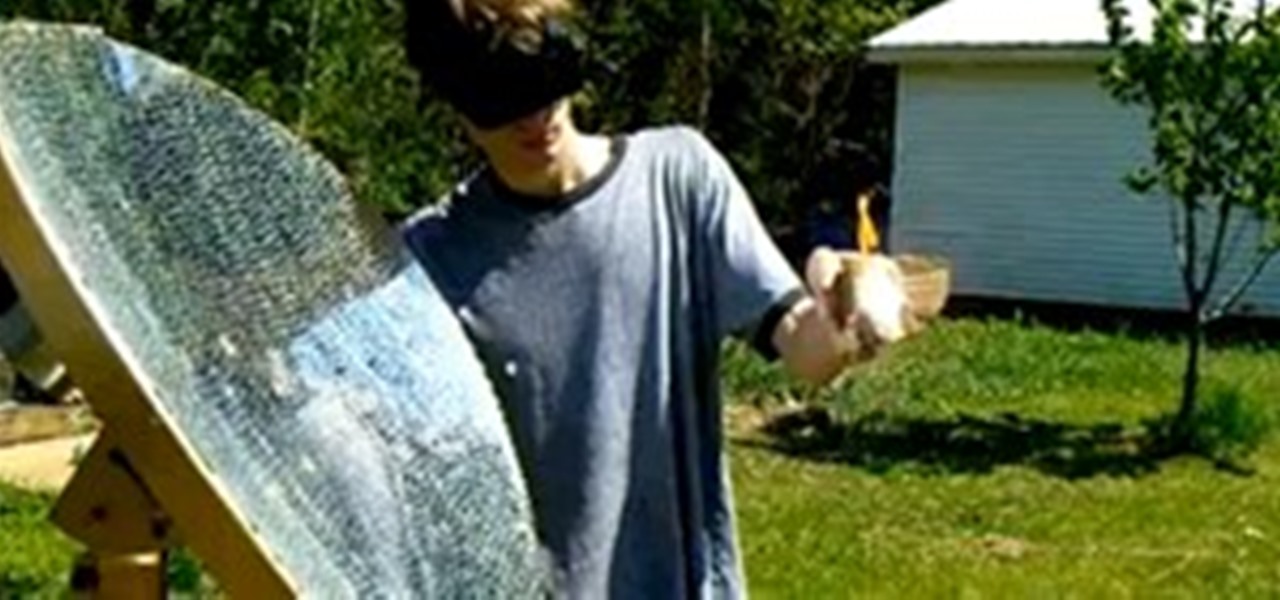
News: Building a Bonafide Solar Death Ray Sounds Too Easy
Eric Jacqmain is one smart cookie. Borrowing from the same principles of Archimedes’ mythological death ray, the Indiana teenager used an ordinary fiberglass satellite dish and about 5,800 3/8" mirror tiles to create a solar weapon with the intensity of 5000x normal daylight. The powerful weapon can "melt steel, vaporize aluminum, boil concrete, turn dirt into lava, and obliterate any organic material in an instant."
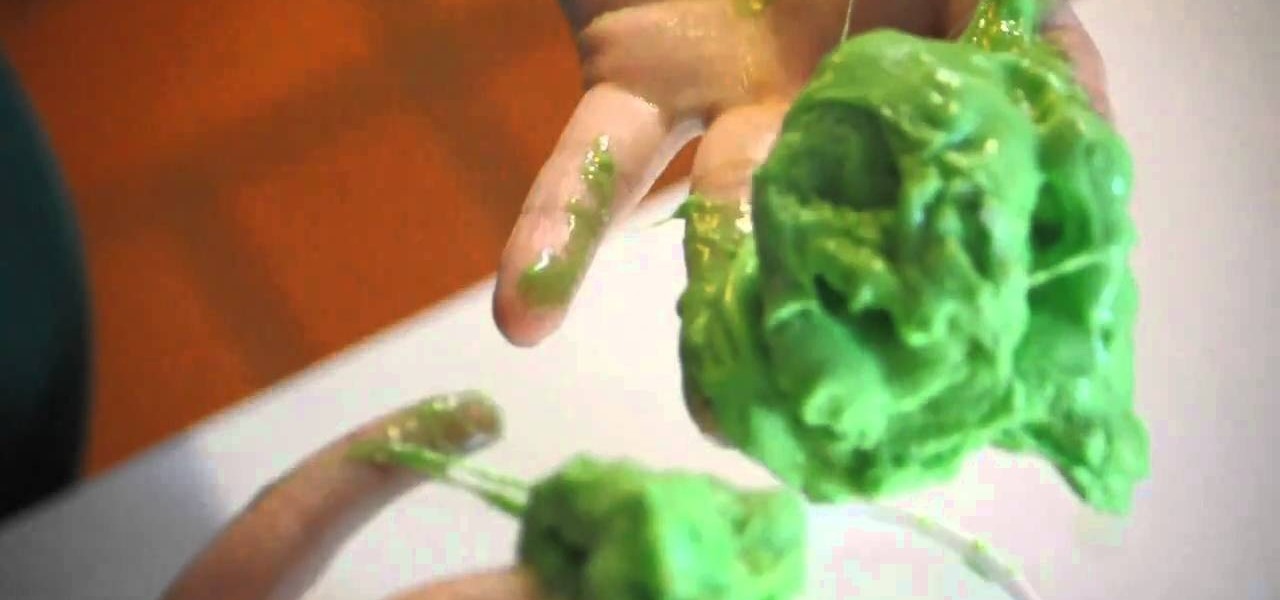
How To: Make fun green slime with borax and Elmer's Glue
The only thing slimier than Charlie Sheen's latest sex scandal is this super sticky and icky green slime, made with borax and some Elmer's Glue. Gain the sticky molasses of experience by checking out this science tutorial on how to whip up a batch of green goo.

How To: Make simple dark green slime without borax
Most folks mistakingly think that slime - or green silly putty - simply can't be whipped up without borax. But the buffer solution can easily be replaced by another ingredient that you already have lying around in your house: laundry detergent.

How To: Make Gooey Green Slime Using Elmer's Glue and Borax
Remember the movie "Flubber," about mad professor Robin Williams and his gravity-defying invention of slime that could walk, talk, and transform into just about anything? Well, you can make a very similar type of green goo at home using stuff you already have lying around.

News: Bored? Get High Now (Using Your Computer)
For some of you out there, today may be a looooong Friday. But have no fear, if you've yet to furtively accomplish shaving off a few extra minutes from the office clock, there is an alternative for getting through the day: computer pharmaceuticals. Relax, moms, we're not talking illicit drugs. Computer pharmaceuticals (AKA: optical and audio illusions) are completely natural, harmless highs that promise to alter your perception and consciousness- without the risk of drugs or alcohol.
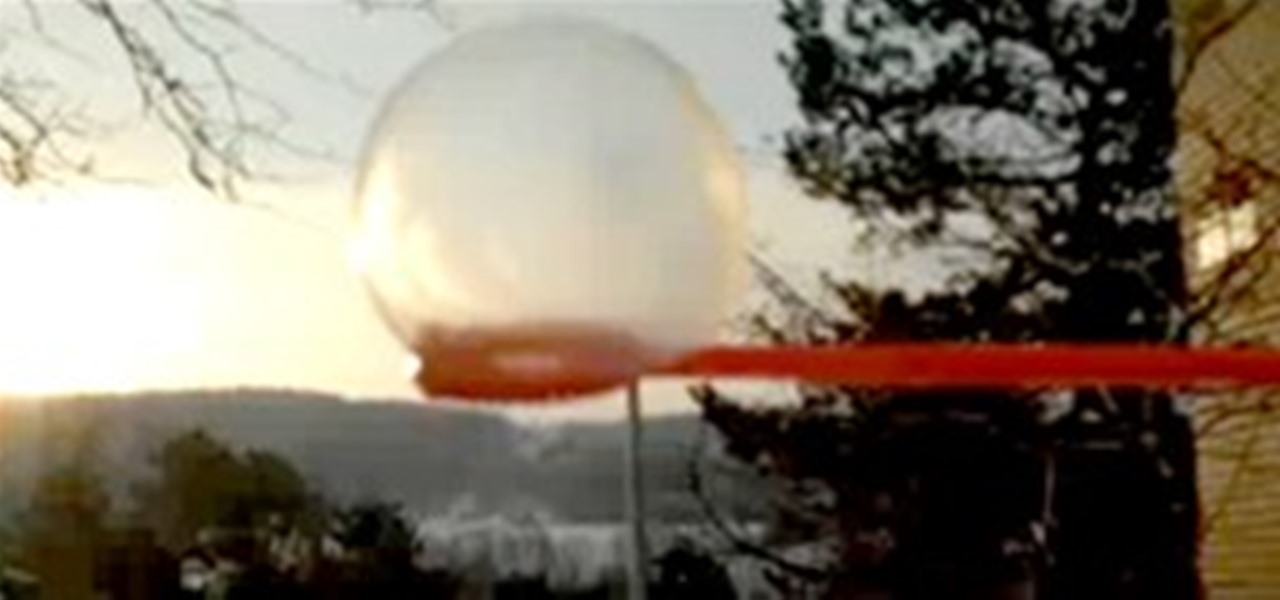
Icy Cold, Winter Science: Watching a Bubble Freeze
A simple science experiment, yet totally satisfying. And the best part is you can go outside and try it right now (if conditions allow). You will need: freezing cold weather and a bottle of bubbles. Previously, HowTo: Make Instant Fog.
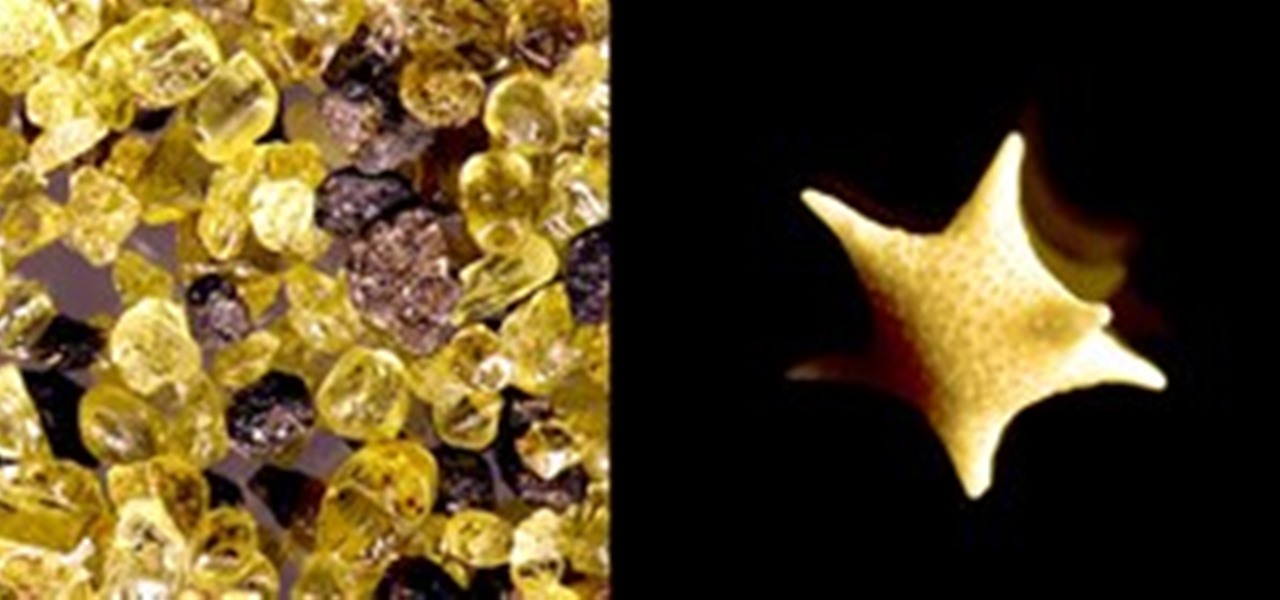
News: Zooming Into Sand
Incredible. There's a type of sand (found only on the small Okinawan island of Iriomote) in which each grain resembles a tiny star. And I never would have known, if it hadn't been for blogger Jason Kottke's pal Mouser. Mouser collects sand from all around the world, and then documents each sample with a macro lens:

How To: Make a gooey slime at home using corn flour
Gross out your friends, or just have fun playing with some goo! You can make your own slime at home easily. All you need is some corn flour and water. Add food coloring if you really want to make it cool!

How To: Make slime without using borax
This video shows you how to make slime, or goo, without using borax which can be harsh on some people's skin. Rather than spending money on buying slime for your children in the toy store, simply mix water and cornstarch. You can even make it any color you want just by adding food coloring. Make slime without using borax.

How To: Use a laser to ignite a fire within a regular balloon
All you need is a burning laser, a bit of flash paper (which you can find at any magician's shop), some thread, a balloon pump, and of course, a balloon. Then set it all up to set a fire inside the balloon!

News: What Happens When Water Hits a Scalding Hot Pan at 3000 Frames-Per-Second?
The Leidenfrost Effect: “a phenomenon in which a liquid, in near contact with a mass significantly hotter than the liquid’s boiling point, produces an insulating vapor layer which keeps that liquid from boiling rapidly”. It looks pretty spectacular captured at 3000 frames-per-second (almost as spectacular as when the same principle is applied to the human hand). Previously, Hand Fully Submerged in Liquid Nitrogen (OUCH... right?)

How To: Make a water drop electrostatic generator
Wanna make some lighting in your very own home? You can with this cool how-to video. Basically what you'll be creating is called a Kelvin's Thunderstorm, or, a water drop electrostatic generator. Check out the video to see what supplies you'll need to make this experiement work.

News: Robotic Ghost Knifefish Is Born
Researchers at Northwestern University have hatched a robotic replica of the ghost knifefish, an amazing sea creature with a ribbon-like fin, capable of acrobatic agility in the water. The fish is distinctive in its ability to move forward, backward and vertically, but scientists didn't understand its vertical movement until the creation of its robot replica, GhostBot (shown below). They now know its vertical propulsion is caused by two waves moving in opposite directions, crashing into each ...

How To: Perform a cool trick with Ivory soap and a microwave
Ever wonder what happens when you put a bar of Ivory soap (the soap that floats!) in a microwave for a few minutes? This science experiment shows what happens when water molecules in a bar of Ivory get nuked! Try it!
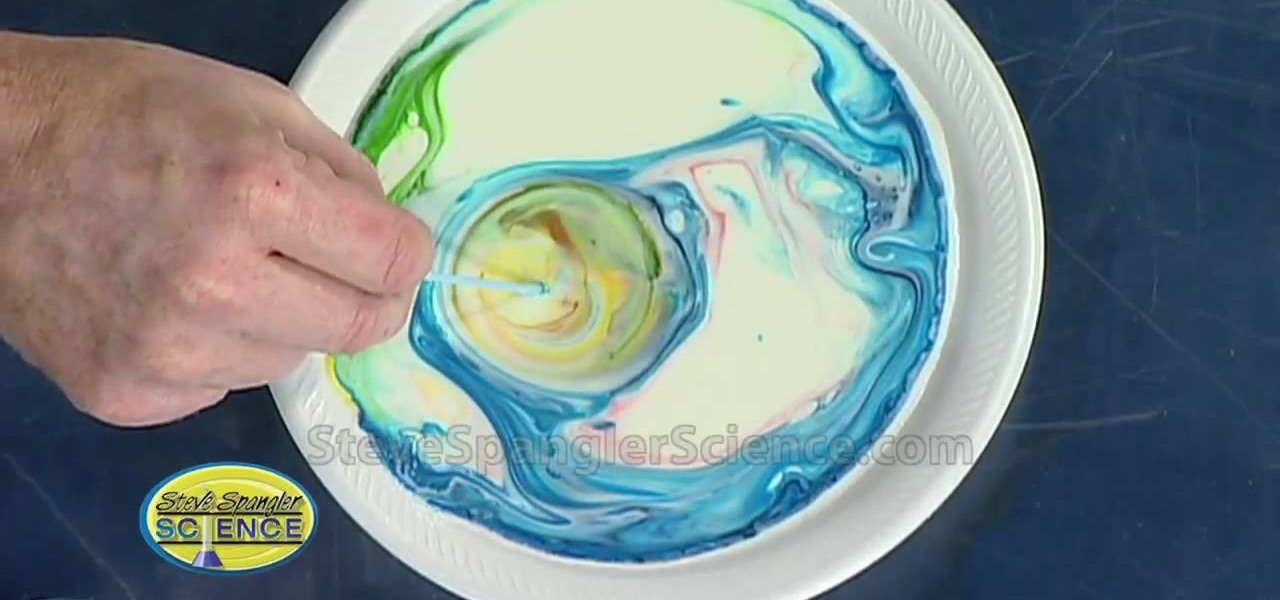
How To: Create a color explosion with this cool science experiement
Soap is an incredible thing and this how-to shows some of its incredible qualities. You'll need a plate, some whole mile, some food coloring, some Q-tips and some dish detergent. It's an explosion of color! Some very unusual things happen when you mix a little milk, food coloring, and a drop of liquid soap. Use the experiment to amaze your friends and uncover the scientific secrets of soap.






